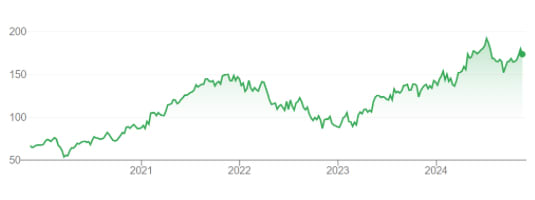You can find a banana and duct tape at most stores for two dollars each, yet a taped banana to a wall costs six million. But why? Professional art has taken many forms across our development as a species, and many styles have emerged since the cave painting days. Notable styles include Impressionism, Surrealism, and Futurism, with many more fading in and out of popularity across history. However, what is viewed as ‘valuable’ art today doesn’t appear to hold its value. We’ve seen the news; the literal banana taped to a wall is being traded around for an eye-watering 6.2 million dollars, and a shredded artwork being auctioned off for even more money. To this, I question, ‘what is going on?’ Why does it seem like such ordinary pieces are selling for life-changing amounts of money?
How Did We Get Here?
While a full art history lecture is not needed to understand contemporary art, a short lesson can help in picking up the meaning of today’s pieces. The Renaissance is what most people think of when thinking about the greatest art of all time. Art from the Renaissance typically depicted religious, historical, or mythological figures. These paintings would eventually bring rise to the Barocco style, which leaned into expression through harsh lighting. A couple centuries later would bring the rise of Impressionism. Impressionism (and later styles like Surrealism and Expressionism) represents emotion through art much more clearly, utilizing color and shape language to explain ideas beyond the piece. To summarize, art has not just become about its subject matter, but the pieces’ deeper meaning and underlying themes as well.
Is Modern Art Bad?
Before I give my opinion, I think it's best that we circle back to the main examples of modern art we have been looking down upon. Deeper dives into these pieces bring new perspectives to the concepts that drive modern art.
A fitting piece to explain first is the duct-taped banana I have been mentioning this whole article. The art, titled ‘Comedian’ planted its roots far deeper than one might think. The piece was conceived by Maurizio Cattelan, an Italian artist and absurdist. An absurdist is someone that believes that the universe on its own holds no meaning, and that its worth is decided and imposed by humans. Cattelan is renowned for more comedic pieces, like one of the former Pope being struck by a meteorite, or replacing a toilet with a working gold one. ‘Comedian’ is a piece thematically rooted in the culture of contemporary art. The banana comments on how modern day art standards have no need to be high, and art can be whatever the artist desires. There is no reason for all art to always be rooted in generations of history or heaps of meaning. In the words of Andy Worhol, “Art is whatever you can get away with.” , and i feel that ‘Comedian’ is one of the best examples of that.
Similarly, ‘Girl with Balloon’ by Banksy is another interesting piece. Banksy is an anonymous street artist known for his political activism. In a vacuum, the piece was made to represent the loss of childlike innocence, and what that may bring for future life. This is great on its own, but ‘Girl with Balloon’ became no ordinary artwork. The jaws of bidders at the Sotheby’s Contemporary Art Evening Auction dropped as the frame began shredding the piece that riches were thrown for, as ‘Girl with Balloon’ was reincarnated into ‘Love is in the Bin.’ This stunt was performed as a commentary on the art market. Fulfilling this role, it was created to bring agency to the artists, and subvert the modern day expectations of art.
In the modern day, most young people act much less ‘traditional’ than their parents and grandparents. Today, we live in a time of great change, and artists are adopting much less traditional viewpoints compared to their elders. I don’t say this to take a positive or negative stance on it specifically, or to act like a disappointed parent, but it also brings reason to my point. Most of these art pieces are commentaries on art itself. ‘Comedian’ comments on the nature of artists, while ‘Love is in the Bin’ comments on the nature of auctions. On the surface level, these pieces are definitely less ‘impressive’ or ‘original’ as the works of the past, but their meaning brings their real value. The significance of these pieces lies in their creators, bringing new life to traditional art. It is a reflection of their artist’s philosophies, as they prove their worth through their explanations.
Conclusion
Art has taken many forms across the centuries. From religious depictions to emotion-led works, artists have had many different meanings behind their pieces. The sight of this, while seemingly jarring, alludes to the changing values and perspectives that shape contemporary art. Many pieces reflect the modern challenge to the status-quo, representing standpoints toward how aspects of art are conducted in the modern world. While the visuals have changed since the classic days, their meanings are provocative to the nature of modern day art culture.
_____________________________________________________________________________________________________________________________________
Works Cited
“From Renaissance to Contemporary Art.” Art50.Net, 16 June 2020, art50.net/en/from-renaissance-to-contemporary-art/. Accessed 08 Dec. 2024.
“Girl with Balloon by Banksy Background & Meaning.” MyArtBroker, www.myartbroker.com/artist-banksy/series-girl-with-balloon. Accessed 08 Dec. 2024.
Holland, Oscar. “Viral Banana Artwork Has Sold Again - This Time for $6.24 Million.” CNN, Cable News Network, 21 Nov. 2024, www.cnn.com/style/duct-taped-banana-maurizio-cattelan-auction-hnk-intl/index.html. Accessed 08 Dec. 2024.
“Latest Banksy Artwork ‘Love Is in the Bin’ Created Live at Auction.” Sothebys.Com, Sotheby’s, 15 Oct. 2018, www.sothebys.com/en/articles/latest-banksy-artwork-love-is-in-the-bin-created-live-at-auction. Accessed 08 Dec. 2024.
Nanay, Bence. “Banksy’s Shredding Stunt Wasn’t Anti-Capitalist-It Was an Emotional Ode to the Art Market.” Quartz, 9 Oct. 2018, qz.com/quartzy/1417787/why-banksy-shredding-the-girl-with-balloon-painting-wasnt-anti-capitalist. Accessed 08 Dec. 2024.
Swns. “Study Finds Why Majority of Gen Z Embrace Their Rebellious Spirit.” New York Post, 6 Jan. 2024, nypost.com/2024/01/05/lifestyle/study-finds-why-majority-of-gen-z-embrace-their-rebellious-spirit/. Accessed 08 Dec. 2024.
Taylor, Elise. “The $120,000 Art Basel Banana, Explained.” Vogue, 10 Dec. 2019, www.vogue.com/article/the-120000-art-basel-banana-explained-maurizio-cattelan. Accessed 08 Dec. 2024.










